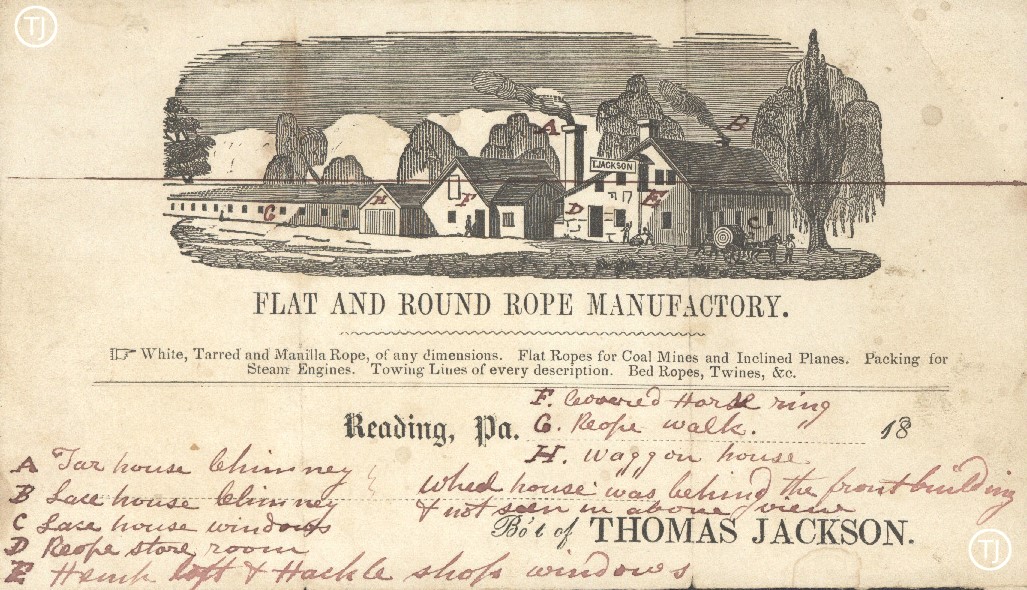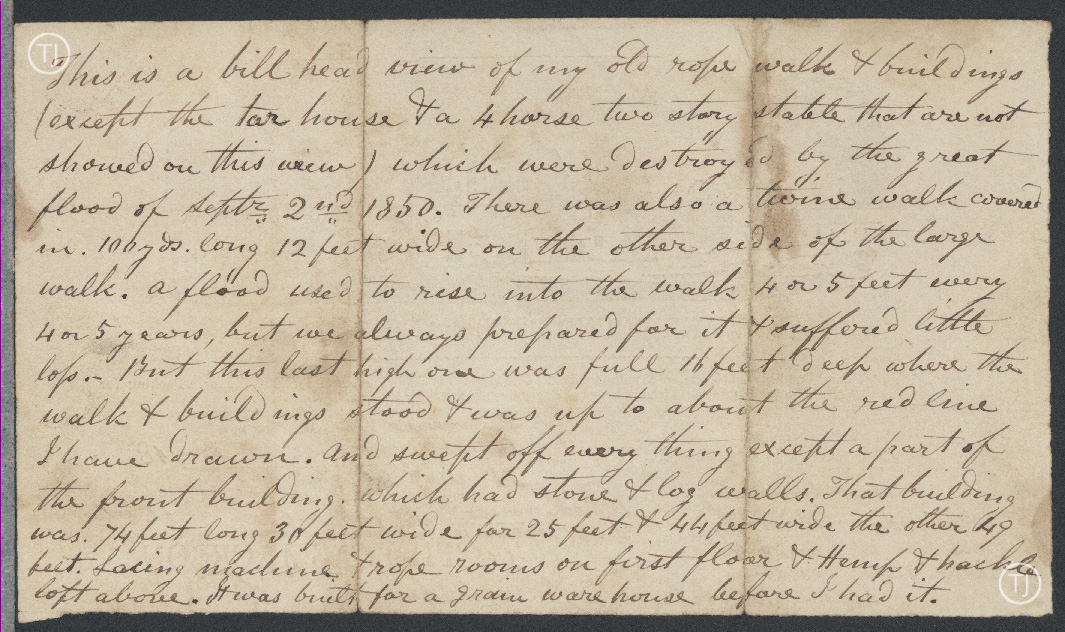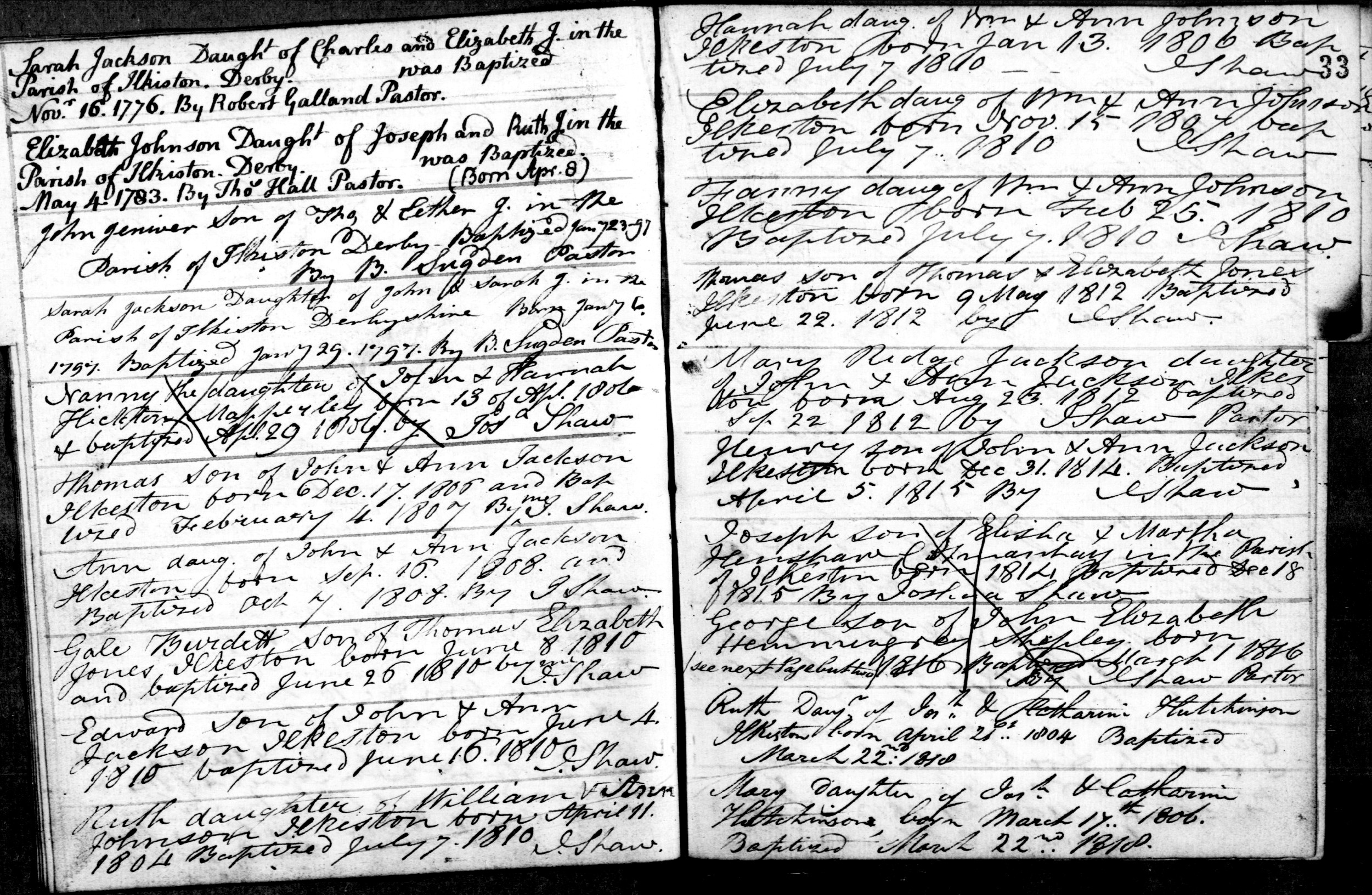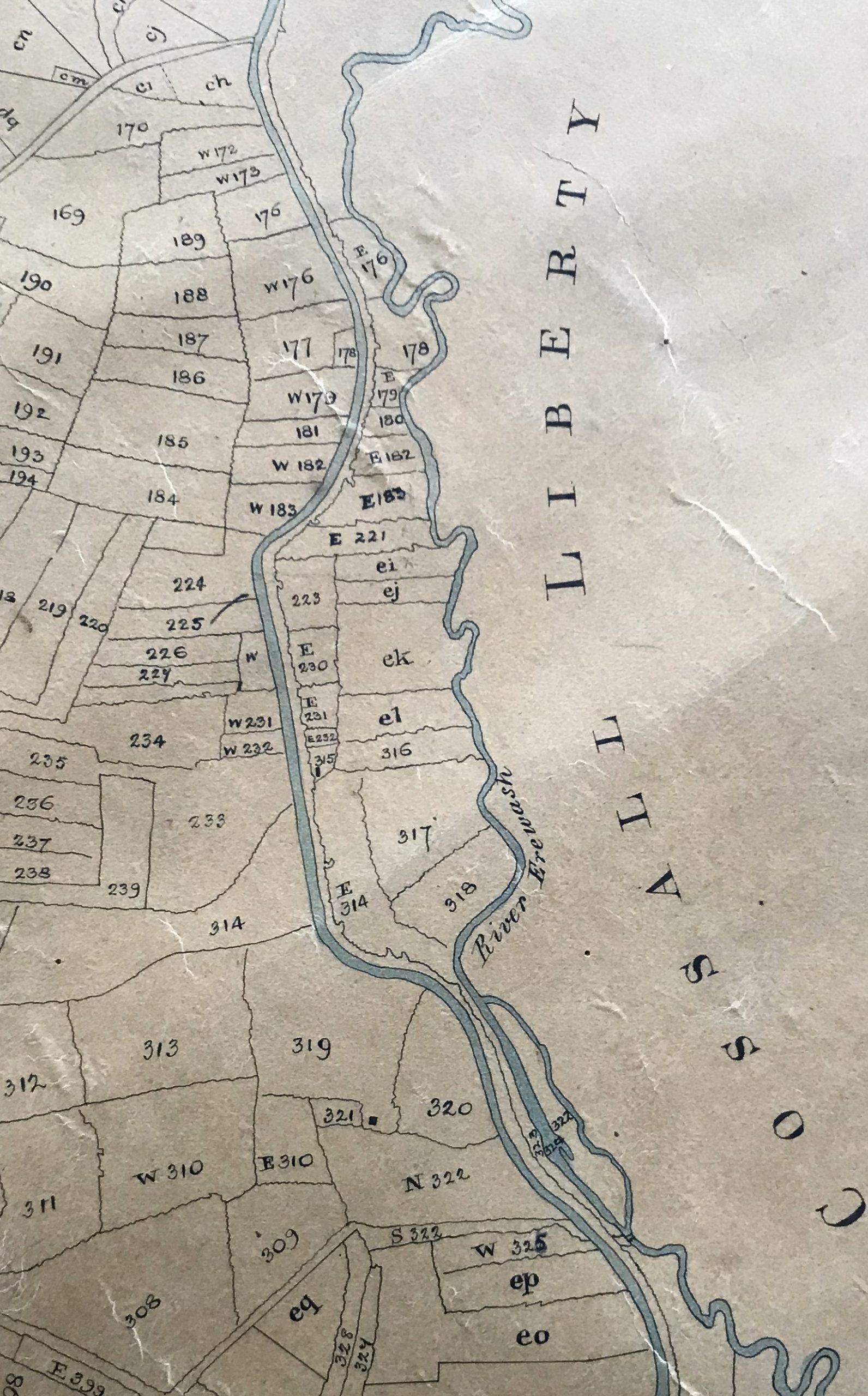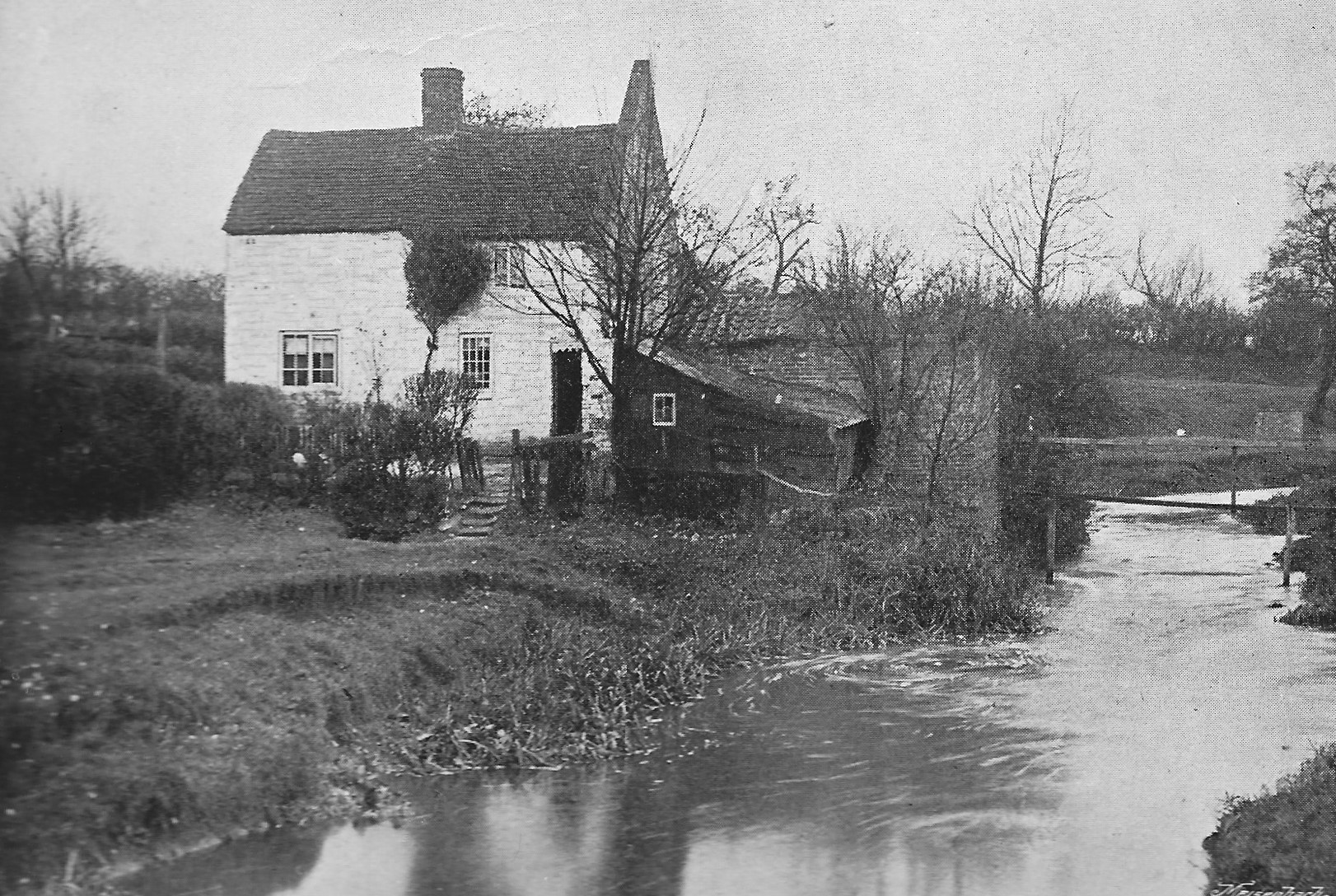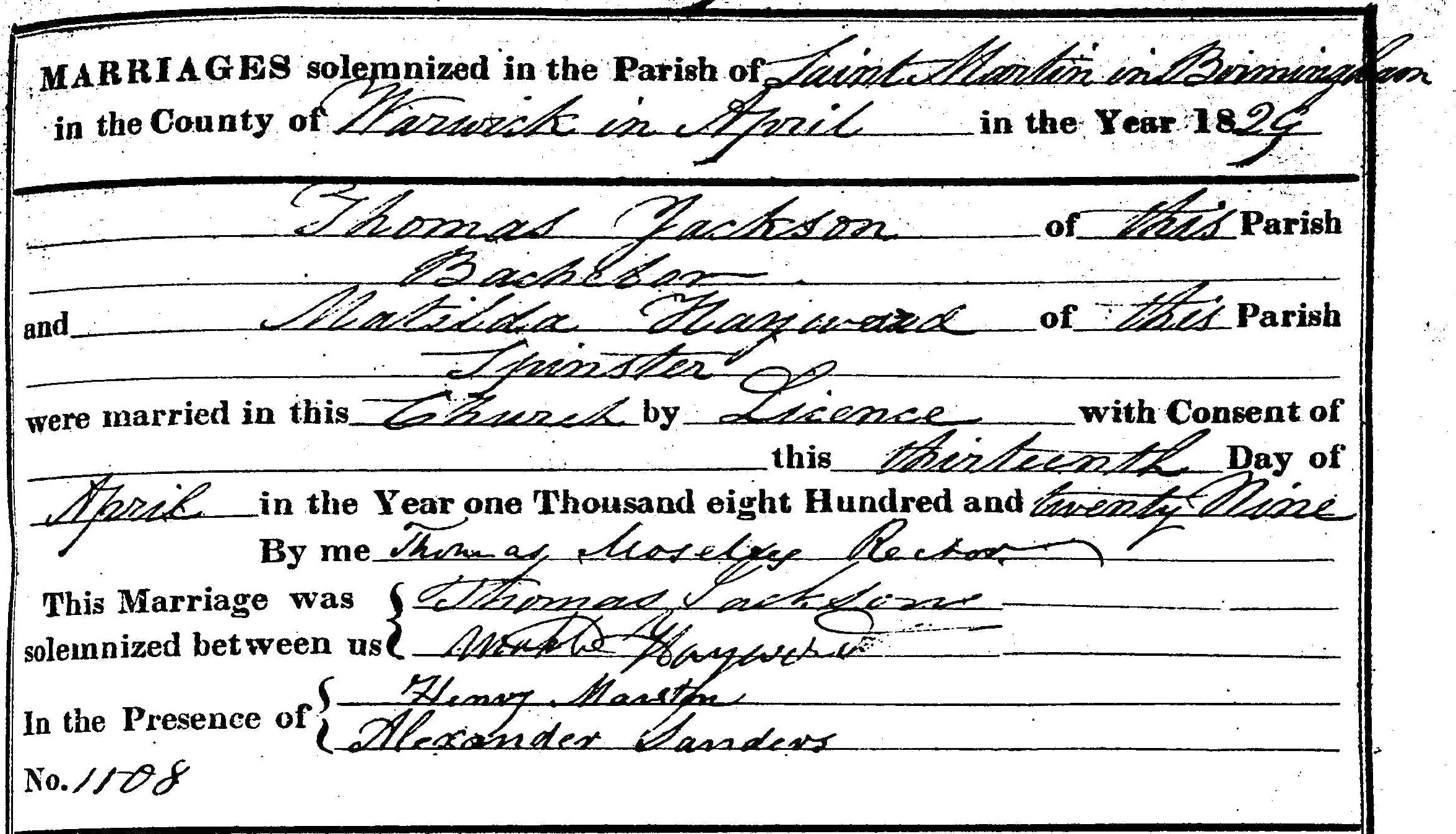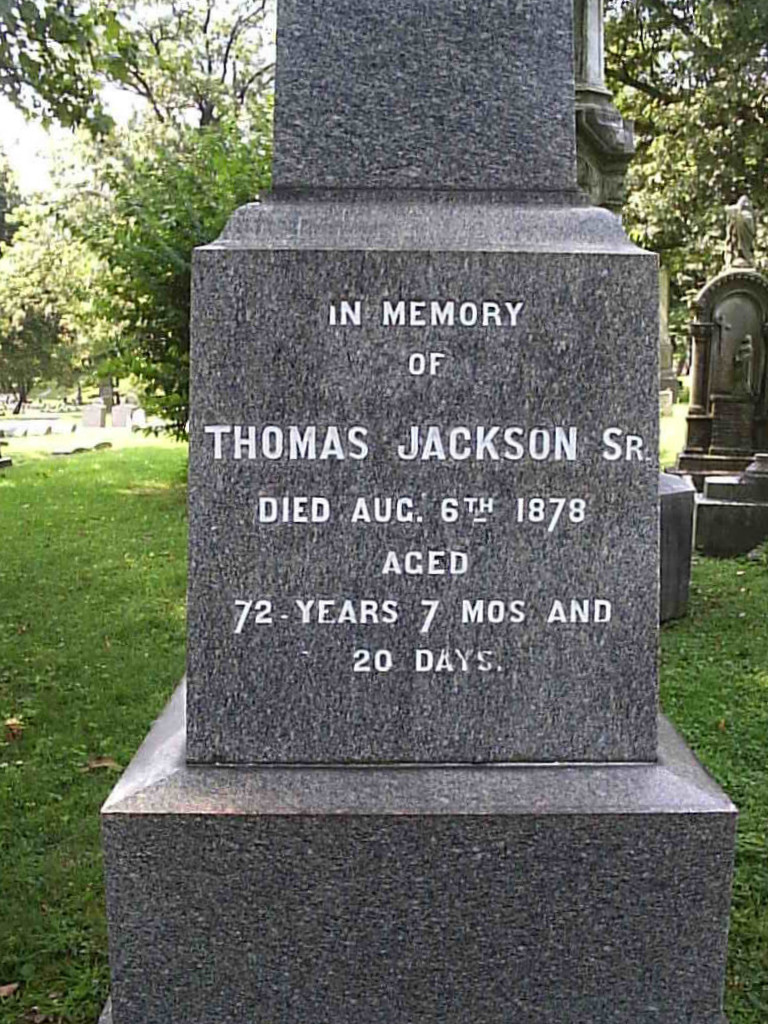Aged 23 and erstwhile resident of the Rope Walk in Ilkeston, Thomas Jackson left England in 1829 to travel to America and eventually settled in Reading, Pennsylvania, where he established a prosperous Rope Works. During his life in his new home Thomas sent numerous letters to his relatives in England, “first hand accounts of American politics, events throughout the civil war and on the horrors of slavery” . These have been collected together by John Paling and his collaborating Ambassadors of “the Friends of Thomas Jackson Letters. inc” to form the basis of a fascinating and captivating website, appropriately entitled “The Thomas Jackson Letters“. They open up a marvellous description and insight into events in America at that time. I don’t intend to encroach upon John and his group’s splendid work here — I couldn’t add anything or improve upon it. However I welcome John’s kind permission to include images and letter extracts from his own website, some of which have been included within the “Jackson family” pages here.
A sample from the work of John Paling
—————————————————————————————————————–
In the beginning …
The purpose of this page is to explore the life of Thomas before his departure to America. What follows is my interpretation of the primary historical evidence and of the genealogy of the Jackson clan. Any mistakes made are therefore my mistakes.
As these pages (below) from the records of the Ilkeston Independent chapel show, Thomas Jackson was born on December 17th, 1806 and baptised there on February 4th 1807. His entry, like many of the others, was signed off by Joshua Shaw, the pastor of the Independent Chapel.
Thomas Jackson was the first child of John and Ann (nee Ridge) who had married on February 24th, 1806 at St. Peter’s parish church in Mancetter, Warwickshire. At that ceremony John was recorded as a ‘widower‘ residing at ‘Ilkeston‘ while Ann was a spinster of Mancetter.
These particular pages from the Independent Chapel records are interesting as we can see several of the births and baptisms of the Jackson family — many of Thomas’s siblings (Ann, Edward, Mary Ridge and Henry), one half-sister (Sarah) and an aunt (Sarah, later the wife of William Watson). We shall consider this wider Jackson family later, but initially we will concentrate upon Thomas and his early life in Ilkeston.
—————————————————————————————————————–
Early life in Ilkeston
In one of his letters, dated August 25th, 1863 Thomas wrote about his life as a lad in Ilkeston … my explanation of some of these terms and places is on the left-hand side of the map. Free free to disagree !!!
Though so long a resident here I have never forgotten that I am an Englishman. A Briton by birth and education. The scenes of early life are yet fresh & green, & sweet as spring flowers in the freshness of early memories.
I remember well the canal* in which I floated my little boat. The “Cut bank” with its fringe of green grass and its clipt hedge.
The “gang road” across the meadows on which I played with my little wagon, and the “Acka dock” under the Nottingham cut**. The trees I used to clime, the bushes where I went “a bird nesting”***, and holes in the “Erewees” where I used to fish and bathe when a boy.
And sally Hicktons [Hicktous?] at the old mill**** on the “Erewees” were I often used to go on a Sunday morning and stay with her from 9 Oclock till 12 to see her cuckoo come out at the top of the old clock and “cuckoo” the hours.
And major Pottersº and “Parsons Pond” where I went “a slurring”ººin winter.
And John Mason’s schoolººº in the yard by the malt-house, where I got a good thrashing for being late in consequence of the aforesaid “slurring”.
I remember all my boyhood rambles around “Ilson” to Kirk Hallum,. West Hallum, Little Hallum. and shipley park. Cotmanay, Langley mill. and “Cossa” [Cofsa?] and short wood & “Hanny Lows at gallows Inn” ººººand some of the many times I “tumbled inter’th [?] cut” but always managed to get out again before life was extinct, or I should not have been here now. All these are fresher in my memory now than they were 40 years ago.
The map right shows the area around Thomas’s home at the Rope Walk (plot 315 and surrounds) where he would spend much of his time as a lad
*the Canal would be the Erewash Canal, the more western of the two water courses in the map (right).
** the Nottingham cut could refer to the Nottingham Canal, which passed by Cossall village, operational from about 1796. (This canal was just off the eastern edge of the map). The gang road could be the path which linked the Erewash canal, from Potter’s Lock (at 324, between 322 and 323), to the Nottingham Canal and thence to Cossall.
*** bird-nesting was the ‘pastime’ of climbing trees to collect birds’ eggs from nests
****the old mill house by the river Erewash stood at Potter’s Lock (324)
º major Potter refers (possibly) to James Potter junior of the Park and Ilkeston Mill
ººslurring was what youngster did, sliding on the ice in cold weather
ºººJohn Mason was a schoolteacher, older brother of tallow chandler Moses Mason. There were several malt-houses in Ilkeston, so I am unsure where John’s school was situated. Perhaps it was at Gallows Inn (see next)
ººººHanny or Annie Lowe was the wife of publican John and after his death in 1807, she kept the inn at Gallows Inn, which had its own malthouse. This inn was situated between the canal and the river, just off the south edge of the map.
The old mill house by the river Erewash at Potter’s Lock (324) (from Trueman and Marston 1899)
William Slater, the son of Thomas’s cousin Caleb Slater, recalled that Thomas “could tell me who used to keep Tavern* at such a place, and who at another and who kept the one of the old Harrow** and that shop*** against the church yard he could not call to mind the name so I said, Mathew Hobson. Yes that’s the name he said and repeated it a time or two just with the old sakes sake I suppose”. (September 1858)
*the Tavern could have been either the old King’s Head or the old Anchor Inn, both standing in the Lower Market Place.
** the old Harrow stood opposite the Parish Church in the Lower Market Place.
***that shop against the church yard was indeed occupied by Matthew Hobson senior.
And in January, 1872 Thomas did more recalling after receiving the “Ilson” Papers sent to him. “I read them all over & see many old names that were familiar to me fifty years ago. I see my old school fellow John Barker* still keeps the Bridge Inn. He learnt me to stutter when I went to school with him. Wonder if he has outlived that affliction. I have, almost. Ah! well Jack was a pretty good fellow and I would like to shake hands with him once again too. I don’t know whether many more of the old stock still live”.
*John Barker (1803-1888) was, for many years, landlord at the Bridge Inn and when he died his son Emanuel ‘Man’ Barker took over that role. The Inn was situated on the west edge of the Erewash Canal, where the Awsworth Road crosses the canal. It was at the very north edge of the map above.
—————————————————————————————————————–
Domestic family life
Before he left for America, Thomas had married Matilda Haywood in Birmingham on April 13th, 1829, when he was 23 years old.
Then, leaving her behind, he and his brother Edward sailed to America to seek their fortunes. Thomas returned in 1831 to escort Matilda over to America and it was in their new home that all their children were born.
Thomas and Matilda travel to America in September 1831 aboard the S.S. Salem
Most of Thomas Jackson’s letters were directed to two of his cousins back in England. The older one was Caleb Slater and the younger one (the son of Caleb) was William Slater. They were all close both in genealogy but also geographically.
“Fifty years ago my father used to take me on his knee and tell me about America — the United States of America. He described it as a far-off land, “flowing with milk and honey, where every man sat under his vine and under his fig tree, and none to make him afraid.” He praised the Government as the only one then free, and based upon the sovereignty of whole people administered for the good and protection of all. He filled my boyish fancy with such glowing ideas of free America, that I determined to go to that highly privileged and prosperous country when I became a man and my own master.”
The surviving children of Thomas and Matilda were …
Thomas Haywood Jackson (1832-1873) … “But the loss of my dear first born son is a loss forever in this world and cannot be made good again. He was taken sick on the 31st of August and died on the 17th of September last year, aged 41 years & 13 days. He never married so left no children to cherish and love for his sake. For over 41 years, as babe, and boy and man I had cherished and clung to him, the first pledge of my young manhoods happy love, one of the three mementos left to me of his long lost mother and her matronly affections. Ah! well, let us hope that he has met his mother in “another and a better world than this”, and they are both happy together”. And later .. “he lays in a cemetery less than half a mile north of us. My father, Mother, brother Samuel & two more of my children sleep near him. So does my brother Edward’s first wife. And it cannot be long before I shall sleep with them. I am 68½ years old but I feel older.”
Matilda ‘Tillie’ Jackson (1838-1877) … Thomas writing May 27th 1867; “My daughter has been married these 5 years to a very good and very nice man and is very happy and comfortable. She has had three children. The first one died. The other two are nice little boys. I love them as my own children”. And a few years later he wrote “My daughter has been married about eleven years to a very nice steady and prosperous man. They have had 5 sons. The first born died in infancy. The other four are fine boys. She has a good & handsome home of her own, and I make my home with them“. (July 1874)
Henry Haywood Jackson (1839-1915)… “my youngest son, Henry, has been married two years now. I promised to build him a house too and he wont be put off any longer. And so I have to fix him a comfortable house this summer and that will keep me busy too” (Thomas writing February 4th, 1871). Henry (Harry) was with his father when they returned to England for a short time in 1842.
Just four years before his death in August 1878, Thomas wrote in reflective and melancholy mood .. “My poor son Tom lays in a cematery less than than half a mile north of us. My father, Mother, brother Samuel & two more of my children sleep near him. So does my brother Edwards first wife. And it cannot be long before I shall sleep with them. I am 68½ years old but I feel older than you are. 1873 was too hard on me. A month after my son died I came near losing over half what the fire had left me. Well I would still have had enough for my own support in my old age”.
Thomas’s wife Matilda had died in January 1843, during a return visit to Birmingham England; she had gone on account of health and to visit her mother and friends. She was buried in All Saints graveyard in Birmingham.
A short summary
In September 1870, the Reading Times (Pennsylvania) briefly summarised the ‘the arrival of Thomas Jackson in America‘ …
Thomas Jackson, the proprietor of the establishment, is a self made man, whose history is one of the many instances which demonstrate what may be accomplished by steady industry and perseverance. He is a native of Derbyshire in the north of England, and was brought up to the rope making trade, in which business his line was engaged for several generations. He emigrated to this country, in company with his brother Edward – also a rope maker by trade – in 1829, at the age of 22. The two landed in Philadelphia, where at that day there were four large rope walks, in none of which, however, could they succeed in getting employment. The design of Mr. Jackson was to work as a journeyman until he could accumulate sufficient capital to start in business for himself. All his stock in trade consisted at that time of a small chest of carpenter’s tools, his personal effects and a few dollars in money.
Then in January 1872 Thomas wrote … “sometimes I think I will never be able to stand a voyage to England again, much as I long to go and to see you all and the old place once more, and mark the changes that 30 years has brought about in old Derbyshire. I am very much obliged to you for the “Ilson (newpapers)” Sadly Thomas never did make the return to old Derbyshire and ‘Ilson’.
Thomas’s health was deteriorating steadily. In December 1874 John Watson wrote to Thomas’s sister Sarah in England; “I received a letter from Edd Jackson Reading last week. He said Thos had not been able to leave the house in 8 or 10 weeks. His legs was swelled so he could not walk he called it dropsy. He was very short of breath when he wrote to me last; said he had to walk very slow so short of breath. I think he’s time is short. He lives with his daughter. His brother Henry has moved to Reading and is not doing very well I fear“.
Thomas Jackson spent his last days living with his married daughter Matilda and his grandchildren.
Thomas was buried in Charles Evans Cemetery in Reading, Pennsylvania (image from findagrave.com)
—————————————————————————————————————–
Let’s now look at the wider Jackson family

